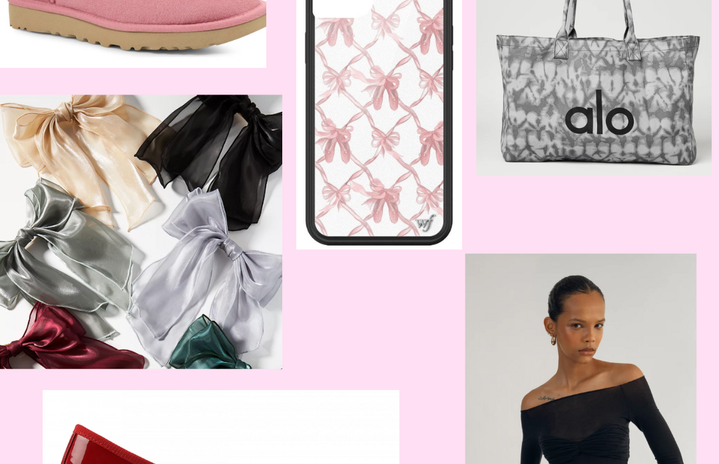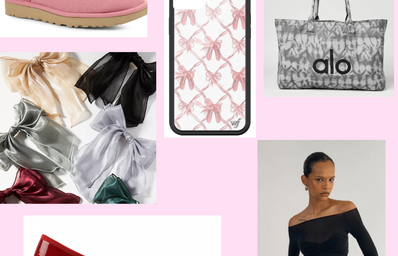Whether it be a certain clothing item or a new brand to be on the lookout for, fashion aesthetics are always evolving. Especially in the era of TikTok, where everything has become associated with a certain “core.” There’s gorpcore, cottagecore, blokecore, balletcore… all of which have captured the attention of Gen Z consumers who attempt to perfectly tailor their personal style into one of these categories.
Amongst these emerging aesthetics, “coquette core” seems to be the most popular one of all. With its literal definition being “a flirtatious woman,” the coquette style is defined by hyper-fixated focuses on feminine, dainty, soft and angelic looks. Inspired by it-girls such as Blair Waldorf from Gossip Girl, who, in season one, has a style of pearls, lingerie and frills galore that make her the perfect icon.
Lily-Rose Depp’s style, such as her MET Gala looks and street fashion, which display the ultimate mixture of dainty and idyllic, is a perfect example of the rising coquette style. Coquette fashion embodies the very basic pleasures of our appearance and wardrobe, from lace blouses, corsets, miniskirts and pointelle knits to clunky heels, pearl jewelry and knitted stockings. Essentially, the coquette style aims to present the ideal of embracing one’s femininity and reclaiming gender narratives by romanticizing traditional beauty and elegance through a feminist lens.
Perhaps one of the biggest icons for this aesthetic is the Queen of Indie Alternative music herself, Lana Del Rey. Lana’s vintage Americana style of the early 2010s and smooth, alluring vocals make her the ideal coquette girl. Lana can be pinpointed as one of the originators of the coquette aesthetic through the experiences she relays in her songs. However, her glamourization of violence, drugs and, most importantly, the Lolita effect is where her influence can become problematic. Though she brings rise to many important issues with her music, she also has no control over how it affects her listeners. This is where the dark side of coquette core comes into play, as harmless as it may seem.
Lana’s discography can be considered one of the greats, however, the issues she brings to the forefront in her art are problems emerging in the coquette community. The hyper-sexualization of young women’s innocence, in accordance with older men’s fascination, can lead to a wrongful romanticization of love. In fact, young girls have been romanticizing the highly controversial 1955 novel Lolita for years now. The book depicts a middle-aged professor’s paedophilic obsession with a 12-year-old girl. The novel perpetuated and combined themes of eroticism in relation to young girls, particularly from the older male gaze.
The coquette style itself has also been defined as “a broad term for hyper-feminine aesthetics that incorporate elements of youth and teenage girlhood.” By attempting to appeal to much older men by dressing in a style dominated by innocence, the young women of this generation may be destined for unsafe situations.
When searching for the coquette aesthetic online, the trends in the physical characteristics of women who embody the style of hyper-feminine fashion remain outrageously the same: skinny, white women. More specifically, models such as Kate Moss are idolized, as she has a thin figure that embodies the ideal of “heroin chic,” a body type that quite literally romanticizes drug use as a way of dieting. Kate Moss definitely promoted this lifestyle in her day, once even saying, “nothing tastes as good as skinny feels.”
Many say this promotes unrealistic standards and disordered eating, as not everyone is delicately skinny and adheres to Eurocentric beauty standards. Therefore, the lack of diversity and body types in these trends can lead to harmful relationships to maintain and alter one’s appearance. Pictures and videos on how to diet and reduce calories have started to resurface on TikTok, evoking parallels of the 2010 Tumblr era, where disordered eating and calorie hyper fixations were centred around Brandy Melville and American Apparel models.
For example, users have begun posting pictures of a can of Diet Coke and a vape, calling it breakfast or a meal. The only difference between the Tumblr Era and now is that coquette core is disguised as a soft and dainty style as a way to get in touch with your feminine side, whereas the dark reality is that it promotes deeply embedded insecurities to rise to the surface.
The fashion world as a whole has always promoted negative habits. However, we are currently in a day and age where even though these habits and themes are slowly being eliminated, they shouldn’t exist at all. A future for fashion is a future where nobody is hurt, harmed or discriminated against.

